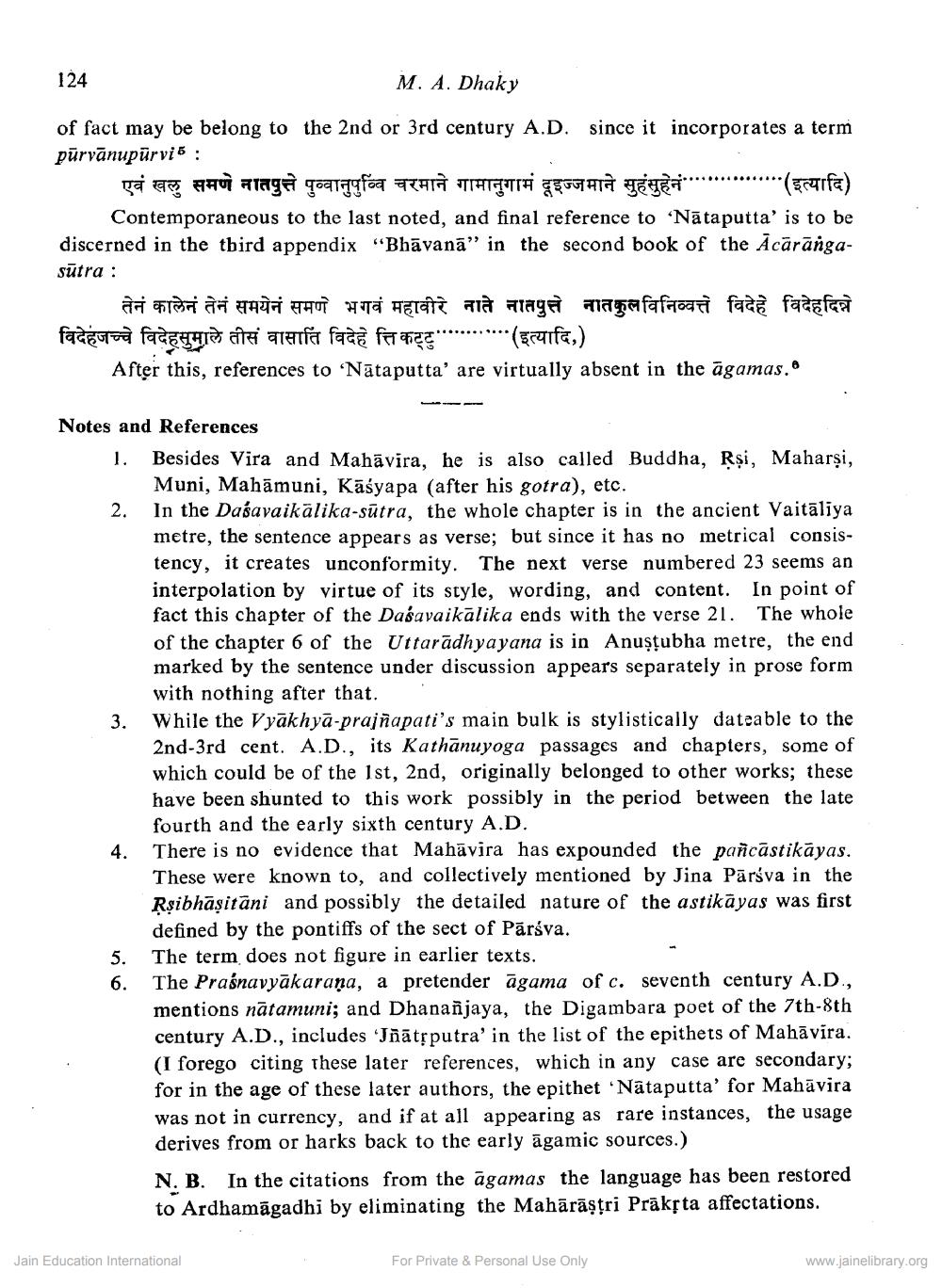Book Title: Nataputta in Early Nirgrantha Literature Author(s): M A Dhaky Publisher: Z_Aspect_of_Jainology_Part_3_Pundit_Dalsukh_Malvaniya_012017.pdf View full book textPage 5
________________ 124 M. A. D of fact may be belong to the 2nd or 3rd century A.D. since it incorporates a term purvanupurvio : एवं खलु समणे नातपुत्ते पुव्वानुपुचि चरमाने गामानुगामं दूइज्जमाने सुहंसुहेनं............."(इत्यादि) Contemporaneous to the last noted, and final reference to Nataputta' is to be discerned in the third appendix "Bhavana" in the second book of the Acarangasutra : तेनं कालेनं तेनं समयेनं समणे भगवं महावीरे नाते नातपुत्ते नातकुल विनिव्वत्ते विदेहे विदेहदिन्ने faccia face una ate atata face fata********* (alfar) After this, references to 'Nataputta' are virtually absent in the agamas. 6 Notes and References 1. Besides Vira and Mahavira, he is also called Buddha, Rsi, Maharsi, Muni, Mahamuni, Kasyapa (after his gotra), etc. 2. In the Dasavaikalika-sutra, the whole chapter is in the ancient Vaitaliya metre, the sentence appears as verse; but since it has no metrical consistency, it creates unconformity. The next verse numbered 23 seems an interpolation by virtue of its style, wording, and content. In point of fact this chapter of the Dasavaikalika ends with the verse 21. The whole of the chapter 6 of the Uttaradhyayana is in Anustubha metre, the end marked by the sentence under discussion appears separately in prose form with nothing after that. While the Vyakhya-prajnapati's main bulk is stylistically dateable to the 2nd-3rd cent. A.D., its Kathanuyoga passages and chapters, some of which could be of the 1st, 2nd, originally belonged to other works; these have been shunted to this work possibly in the period between the late fourth and the early sixth century A.D. There is no evidence that Mahavira has expounded the pancastikayas. These were known to, and collectively mentioned by Jina Parsva in the Rsibhasitani and possibly the detailed nature of the astikayas was first defined by the pontiffs of the sect of Parsva. 5. The term does not figure in earlier texts. 6. The Prasnavyakarana, a pretender agama of c. seventh century A.D., mentions natamuni; and Dhananjaya, the Digambara poet of the 7th-8th century A.D., includes 'Jnatnputra' in the list of the epithets of Mahavira. (I forego citing these later references, which in any case are secondary; for in the age of these later authors, the epithet 'Nataputta' for Mahavira was not in currency, and if at all appearing as rare instances, the usage derives from or harks back to the early agamic sources.) N. B. In the citations from the agamas the language has been restored to Ardhamagadhi by eliminating the Maharastri Praksta affectations. 4. Jain Education International For Private & Personal Use Only www.jainelibrary.orgPage Navigation
1 ... 3 4 5
